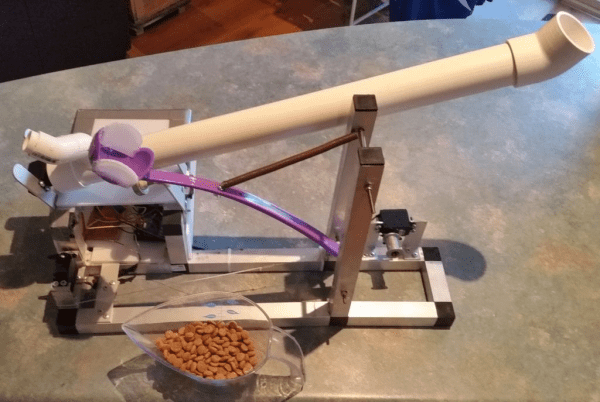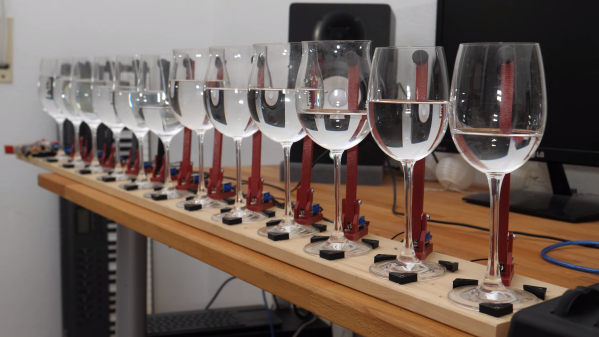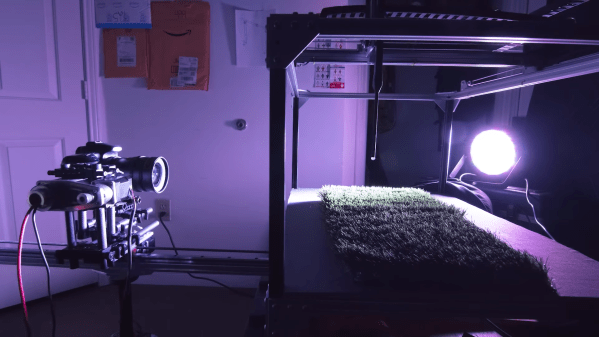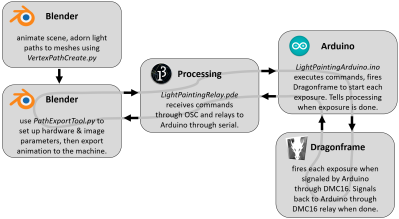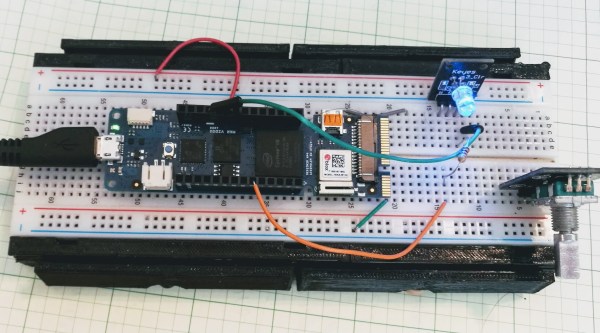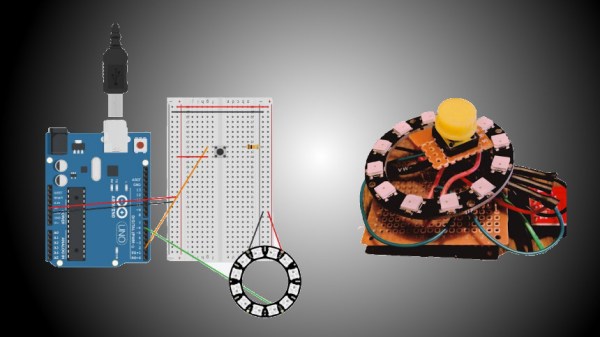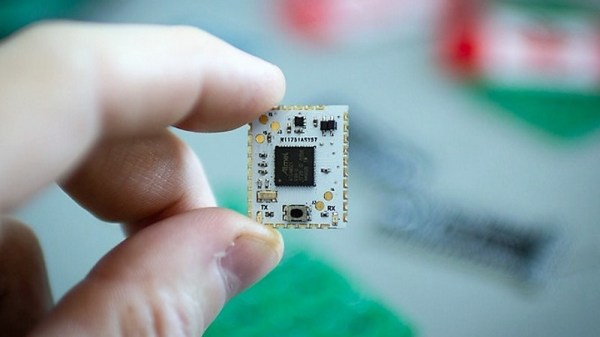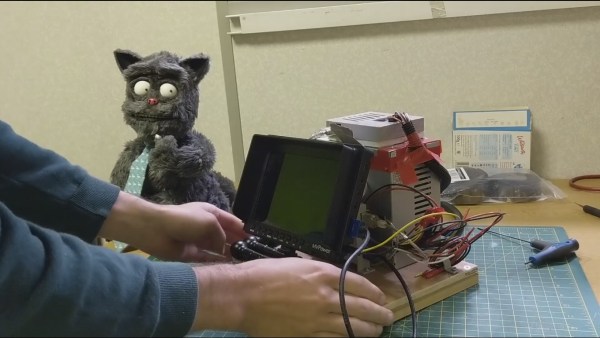[NathanKing] has a cute, rambunctious pupper who eats way too fast for her own good. He’s tried various distribution methods intended to get her to slow down, but she’s just too excited to eat. [Nathan]’s latest solution is to launch the food piece by piece using a catapult. The dog loves the gamified feeding method, which is sort of like one-way fetch. She gets a bit of exercise, and everyone is amused for the half hour it takes to fling 1.5 cups of food one piece at a time.
Electronics-wise, this food flinger doesn’t use much more than three servos and an Arduino Uno. Servo #1 pulls the arm back until it hits a limit switch. Servo #2 holds the arm down , and servo #3 rotates the food tube until it drops a unit of kibble into the spoon. Then servo #2 lets the arm go, and the tasty morsel flies about 30 feet (10 meters).
[Nathan] doesn’t offer step-by-step instructions, but there is more than enough detail to replicate this project. He used what he had on hand, such as scrap aluminium from another project for the frame. Future plans include swapping out the 6V lantern battery for rechargeable AAs, and downsizing to a Nano. We’ve fetched a couple of videos for you and thrown them in after the break. Go get ’em, reader!
Pets need plenty of water, especially during the summer. Here’s a no-sweat automatic watering solution we saw a few years ago.
Continue reading “Dog-Or-Catapult Controls The Speed Of The Feed”

